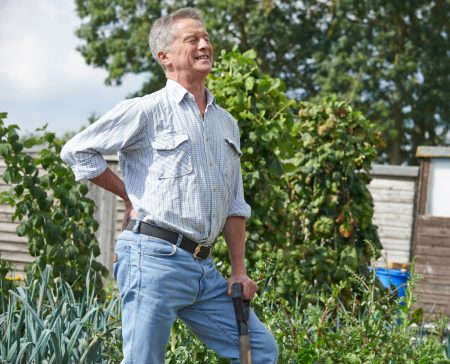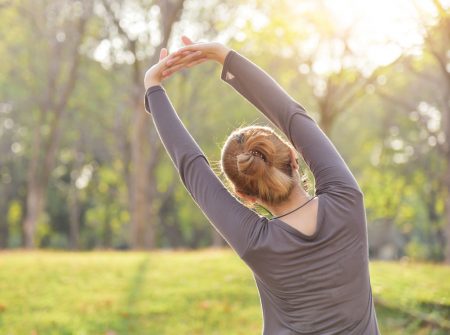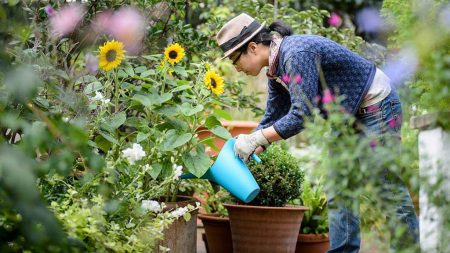Spring is here and that means many people will spend time outside planting, mowing the lawn and pulling weeds. Since gardening requires bending, reaching and pulling, your body may not be ready for that kind of strenuous activity. Thus, it is important to stretch your muscles before reaching for your gardening tools. The back, upper legs, shoulders, and wrists are all major muscle groups affected when using your green thumb.
Just like any other physical activity, it is best to do simple stretches before and after gardening to help alleviate injuries, pain and stiffness. To make gardening as enjoyable as possible, it is important to prepare your body for this type of physical activity.


The following stretches will help alleviate muscle pain after a day spent in your garden:
- While sitting, prop your heel on a chair or step, keeping the knees straight. Lean forward until you feel a stretch in the back of the thigh or hamstring. Hold this position for 15 seconds. Do this twice and repeat with the other leg.
- Stand up and grab the front of your ankle from behind. Pull your heel towards your buttocks and hold the position for 15 seconds. Do this twice and repeat with the other leg.
- While standing, put your fingers together above your head with the palms up. Lean to one side for 10 seconds, then to the other. Repeat this stretch three times.
Keep safe and healthy to enjoy the beauty of gardening by:
- Check Your Posture: “Posture” not only refers to your whole body position, but also to the angle of your wrist while using hand tools. Studies have shown that people lose up to 25 percent of their grip strength when their wrist is bent. If you have arthritis, use tools that are easy to grasp and that fit your ability. Research shows that 2½ hours per week of moderate physical activity can help relieve arthritis pain and stiffness.
- Dress to Protect: Gear up to protect yourself from lawn and garden pests, harmful chemicals, and insects by wearing safety goggles, closed toe shoes and long pants. Be sure to wear gloves to lower the risk for skin irritations, cuts, and certain contaminants. Use insect repellent to protect yourself from diseases caused by mosquitoes and ticks.
- Safety First: Powered and unpowered tools and equipment can cause serious injury, so make sure to follow instructions on chemicals and garden equipment. If you are taking medications that may make you drowsy, don’t operate machinery, climb ladders, or do activities that may increase your risk for injury.
- Beware of the Heat: Even being outside for short periods of time in hot temperatures can cause serious health problems. Monitor your activities and time in the sun to lower your risk for heat-related illness. Be sure to drink plenty of water and avoid sugary drinks and alcohol while in the heat. If you experience breathlessness stop gardening and sit in the shade or a cool area so that your body’s thermostat has a chance to recover. Pay attention to signs of heat-related illness, including extremely high body temperature, headache, rapid pulse, dizziness, nausea, or confusion.
Lastly, make sure your gardening activities are varied and tasks are rotated every 15 minutes with a brief rest in-between so that the same muscles are not used over and over again. If you already feel muscle aches, there are ways to alleviate the discomfort. Apply a cold pack to any area of pain for 15 – 20 minutes every 2 hours for the first 48 hours. If the pain persists after 48 hours consider a visit to a chiropractor. Dr. Merckling can help by stimulating your body’s natural healing process with chiropractic care.




